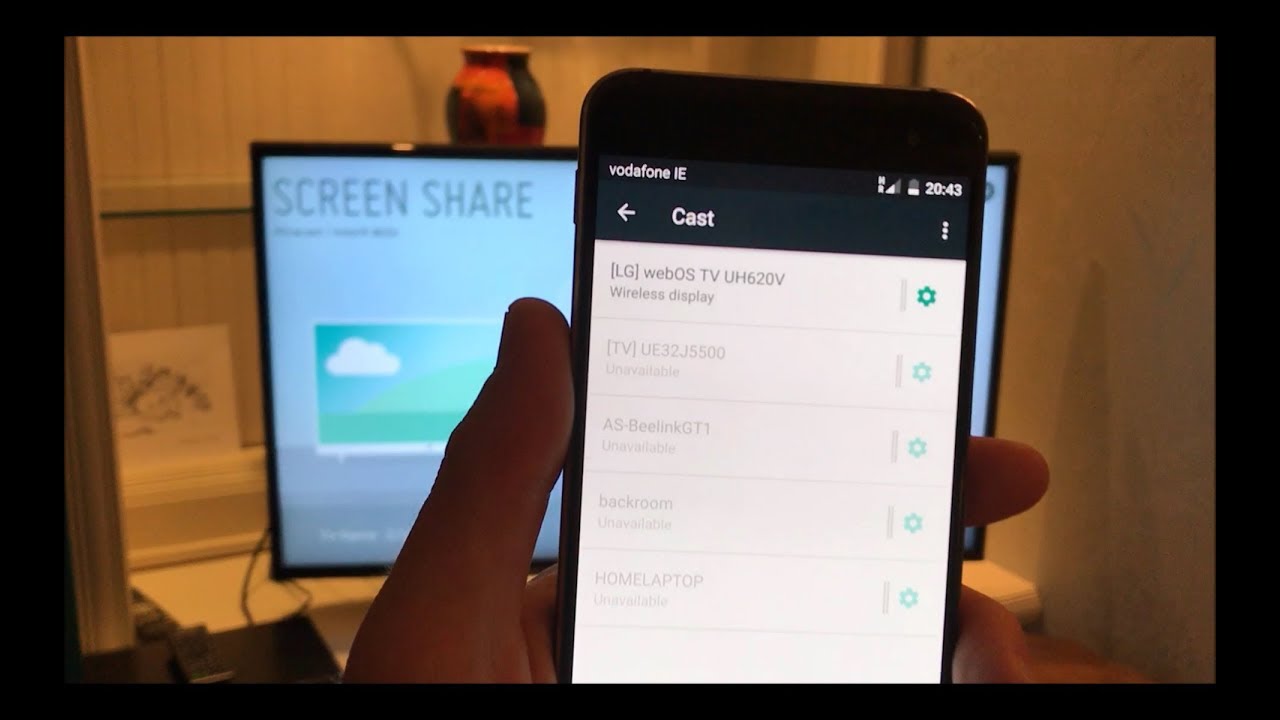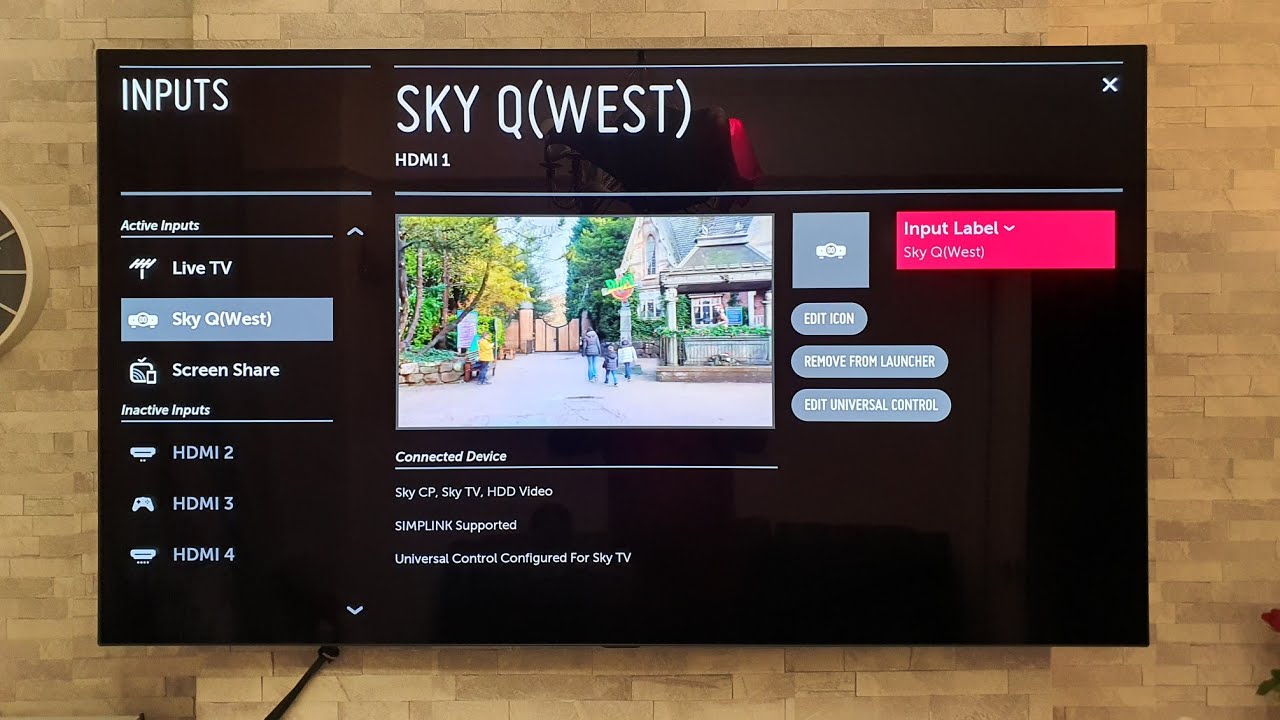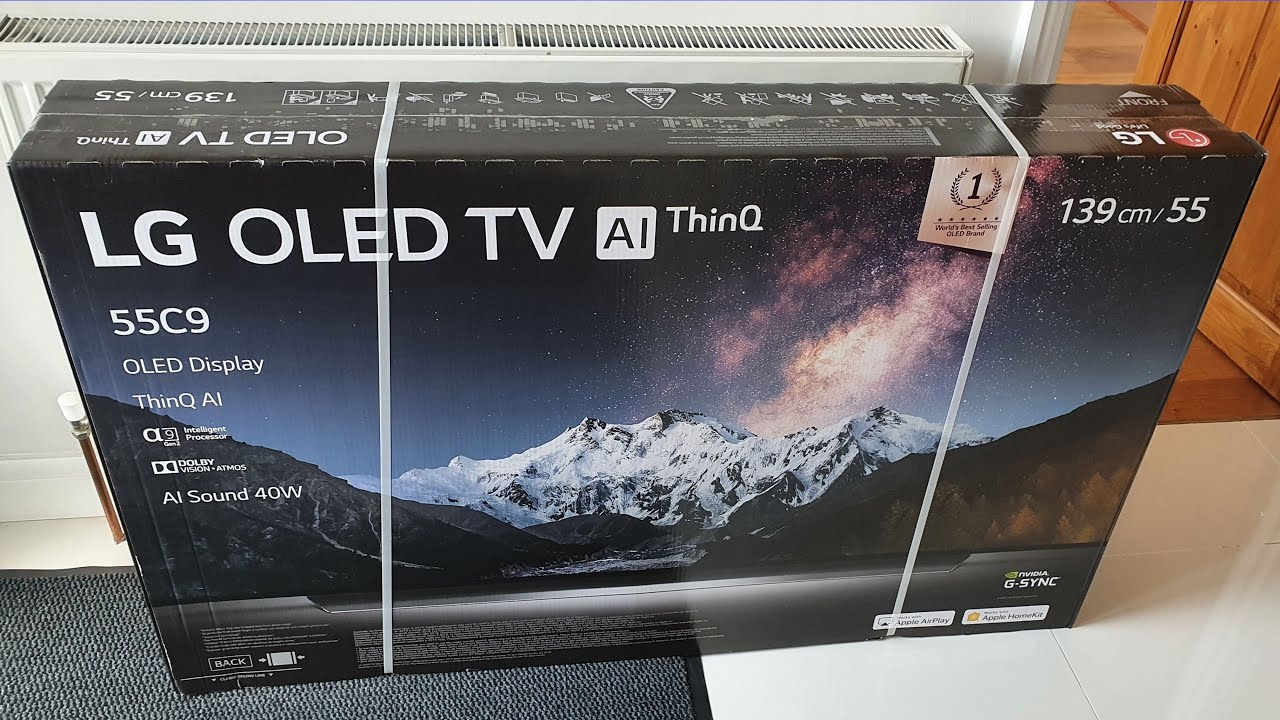Introduction
Welcome to the world of LG OLED TVs! If you recently purchased or are planning to buy an LG OLED TV, you might be wondering how to identify its specific model. The model number is crucial when it comes to understanding the features, capabilities, and specifications of your TV.
Knowing the model number of your LG OLED TV can help you find compatible accessories, troubleshoot issues, and gain valuable insights into its performance. Whether you want to explore the various features and settings or you’re simply curious about the manufacturing details, identifying the model number is the first step.
LG OLED TVs have become renowned for their exceptional picture quality, sleek designs, and advanced features. Understanding the different models and their unique offerings can guide you in making an informed purchasing decision and ensure that you enjoy the best possible TV experience.
This article will provide you with a guide on how to find the model number on your LG OLED TV and decode the alphanumeric code to gain insights into the year of manufacture, series, and features. By the end, you’ll have a better understanding of your LG OLED TV and be able to make comparisons among different models.
So, if you’re ready to unravel the mysteries behind LG OLED TV model numbers, let’s get started!
Why is it important to identify the LG OLED TV model?
Understanding and identifying the model number of your LG OLED TV is crucial for several reasons. Let’s take a closer look at why it’s important:
1. Compatibility: Knowing the specific model number helps ensure compatibility with various accessories, such as wall mounts, sound systems, or gaming consoles. Each model may have specific requirements or compatibility limitations, so identifying the correct model number ensures a seamless integration of additional devices.
2. Troubleshooting: Different LG OLED TV models may encounter unique issues or glitches. By knowing your TV’s model number, you can access specific troubleshooting guides, firmware updates, or support forums tailored to your TV’s model, making it easier to resolve any technical difficulties that may arise.
3. Upgrades and Updates: LG periodically releases firmware updates and new features for their OLED TVs. Identifying your TV’s model number allows you to stay informed about these updates and upgrades, ensuring that your TV remains up-to-date with the latest enhancements and improvements.
4. Warranty and Product Support: The model number is crucial for registering your TV for warranty purposes. It also helps LG customer support agents provide efficient assistance, as they can quickly identify the specific model and provide tailored advice or solutions.
5. Comparison and Research: Identifying your LG OLED TV model enables you to compare it with other models in terms of specifications, features, and year of manufacture. This knowledge is invaluable when researching to make an upgrade or understanding the differences between various LG OLED TV offerings.
6. Resale Value: If you decide to sell or trade-in your LG OLED TV in the future, having the correct model number increases its market value. Potential buyers or retailers can accurately assess the TV’s specifications and features, leading to a smoother transaction process.
In summary, identifying the model number of your LG OLED TV is essential for compatibility, troubleshooting, staying up-to-date, accessing product support, conducting comparisons, and maximizing its resale value. So, take a moment to locate the model number on your TV, and let’s move on to the next section to explore how to find it.
How to find the model number on your LG OLED TV?
Locating the model number of your LG OLED TV is a straightforward process. Here are a few methods you can try:
1. Check the TV frame: The model number is often printed on a sticker or label located on the back of the TV. Look for a combination of letters and numbers, usually starting with “OLED,” “55” (indicating the screen size), followed by a series of alphanumeric characters. Take note of the entire string as it will be helpful for decoding the model number.
2. Access the TV settings: You can also find the model number within the TV’s settings menu. Using your remote, navigate to the “Settings” option and select “All Settings.” Look for an option like “About TV” or “TV Information.” Within this section, you will find details about the TV, including the model number.
3. Consult the user manual: If you have the user manual that came with your LG OLED TV, check the “Specifications” or “Product Information” section. The model number will be listed there, along with other relevant details about your TV’s features and capabilities.
4. Use the LG support website: In case the above methods don’t work or you misplaced the user manual, you can visit LG’s official support website. Enter your TV’s serial number or model number in the search bar to access specific information and support documentation related to your TV model.
Keep in mind that the location of the model number may vary slightly depending on the TV’s design and model year. If you’re unable to locate the model number using the methods mentioned above, consult the TV’s manual or reach out to LG customer support for assistance.
Now that you’ve successfully found the model number of your LG OLED TV, let’s move on to the next section, where we’ll decode the model number to gain insights into the year of manufacture, series, and features.
Decoding LG OLED TV model numbers
LG OLED TV model numbers may seem complex at first glance, but with a little decoding, you can easily understand their meaning and gain valuable insights into your TV’s specifications. Let’s break down the different components of an LG OLED TV model number:
1. “OLED”: The model number typically starts with the acronym “OLED,” which indicates that the TV is an OLED (Organic Light-Emitting Diode) model. OLED technology delivers exceptional picture quality, deeper blacks, and vibrant colors, making it a popular choice for home entertainment.
2. Screen Size: Following the “OLED” acronym, you’ll usually find a number indicating the screen size of the TV. For example, “55” denotes a 55-inch screen size. This allows you to instantly know the approximate dimensions of your TV.
3. Alphanumeric Characters: The remaining alphanumeric characters in the model number denote specific details about the TV, such as the series, year of manufacture, and additional features.
4. Series: In some cases, the model number includes a series identifier, such as “C,” “E,” or “G.” Each series represents a different tier of features and specifications. Higher series numbers often indicate more advanced technology and enhanced capabilities. For example, an LG OLED TV with a model number like “OLED55CXPUA” belongs to the “CX” series.
5. Manufacturing Year: LG uses a specific code within the model number to represent the year of manufacture. For instance, the letter “X” in the model number “OLED55CXPUA” indicates that it was manufactured in 2020. Keep in mind that this code may vary depending on the specific year.
6. Additional Features: Some LG OLED TV model numbers may include additional letters or numbers that represent specific features or variations of the TV. For example, “A” in the model number “OLED55CXPUA” signifies that it includes an Alpha 9 Gen 3 AI Processor. These additional details can help you differentiate between different models within the same series.
By decoding the model number, you can easily determine the screen size, series, year of manufacture, and additional features of your LG OLED TV. This knowledge allows you to make comparisons between different models and understand the capabilities of your TV more accurately.
Now that you have a better understanding of how to decipher LG OLED TV model numbers, let’s move on to the next section where we will explore how to identify the year of manufacture.
Identifying the year of manufacture
LG employs a specific code within the model number of their OLED TVs to indicate the year of manufacture. While the coding system can vary slightly, understanding the general principles will allow you to identify the year your TV was made. Here’s a breakdown of the typical codes used to determine the year of manufacture:
1. “X”: LG often uses the letter “X” in the fourth position of the model number to signify the manufacturing year. For example, if your model number is “OLED55CXPUA,” the “X” indicates that it was manufactured in 2020.
2. “R”: In some cases, LG uses the letter “R” to represent the year of manufacture. For instance, if your model number is “OLED55BXPUA,” the “R” signifies that it was manufactured in 2020. This variant of coding is relatively new and may be employed in future models.
3. Other Codes: While “X” and “R” are commonly used, it’s important to note that LG occasionally utilizes different codes to represent the manufacturing year. Therefore, it’s essential to cross-reference the specific year codes for the model number in question. You can refer to the LG website, user manual, or contact LG support for accurate information regarding the year indicators.
By identifying the year of manufacture, you gain insight into how recent your TV is and can assess its compatibility with the latest technology and features. Furthermore, knowing the manufacturing year allows you to compare and evaluate different LG OLED TV models more effectively.
Now that you have an understanding of how to identify the year of manufacture for your LG OLED TV, let’s proceed to the next section, where we will explore how to interpret the series and features of different models.
Understanding the series and features
LG OLED TVs come in different series, each offering a unique set of features and specifications. Understanding the series and their associated features can help you make an informed decision when choosing the right TV for your needs. Here’s a closer look at LG’s OLED TV series and their key features:
1. B Series: The B series is typically the entry-level range within LG’s OLED TV lineup. While these TVs may lack some advanced features found in higher-tier series, they still deliver excellent picture quality and a range of smart features, making them a solid choice for budget-conscious buyers.
2. C Series: The C series is a step up from the B series, offering additional features and improvements in image processing. These TVs often showcase LG’s latest technology, providing enhanced picture quality, better motion handling, and improved color accuracy. The C series is a popular choice for enthusiasts who want a balance of affordability and performance.
3. E Series: The E series represents the mid-range lineup of LG OLED TVs. These TVs boast advanced features such as improved image processing, enhanced audio capabilities, and support for a wide range of HDR formats. With their sleek designs and impressive performance, the E series offers a compelling option for those seeking a premium TV experience.
4. G Series: The G series sits at the top of LG’s OLED TV range and represents the pinnacle of their technological advancements. These TVs are equipped with the latest innovations in image processing, offering stunning picture quality, deep blacks, and vibrant colors. The G series models often come with additional features like AI image and sound enhancements, premium build quality, and sleek aesthetics.
5. Additional Features: LG OLED TVs within each series may also come with specific features or designations beyond the series identifier. For example, you may encounter models with designations like “AI ThinQ,” indicating the integration of LG’s artificial intelligence technology for enhanced smart capabilities, or “Nanocell,” highlighting the inclusion of LG’s Nanocell technology for improved color reproduction.
It’s important to note that the features can vary within each series, and newer models tend to offer more advanced technology and features compared to older ones. Before making a purchase, it’s recommended to research and compare the specific features of the models you’re interested in to ensure they align with your preferences and requirements.
Now that you understand the significance of different series and their associated features, you can confidently explore and compare various LG OLED TV models to find the one that best suits your needs.
Comparing different LG OLED TV models
When it comes to choosing the perfect LG OLED TV for your entertainment needs, comparing different models is essential to find the one that suits your preferences and budget. Here are some factors to consider when comparing different LG OLED TV models:
1. Screen Size: LG offers OLED TVs in various screen sizes, ranging from 55 inches all the way up to 77 inches or larger. Consider the size of your room and your viewing distance to determine the ideal screen size for an immersive experience.
2. Picture Quality: LG OLED TVs are renowned for their exceptional picture quality, with deep blacks, vibrant colors, and wide viewing angles. Compare different models based on factors such as contrast ratio, color accuracy, HDR support, and image processing technologies to ensure the best visual experience.
3. Series and Features: LG offers OLED TVs in different series, each with its own set of features and capabilities. Compare the features within each series, such as smart functionality, AI integration, sound technology, and connectivity options to find the model that aligns with your requirements.
4. Design: Look at the design aesthetics of the TVs and consider factors like bezel size, stand design, and overall aesthetics to ensure that it complements your living space and personal style.
5. Audio Performance: While LG OLED TVs deliver impressive visuals, audio quality is also crucial for an immersive viewing experience. Compare the audio features, speaker configuration, and sound enhancement technologies to ensure a rich and immersive sound experience.
6. Pricing and Value: Evaluate the pricing of different models while considering the features and performance they offer. Look for models that offer the best value for your investment by striking a balance between the features you need and the price you’re willing to pay.
7. User Reviews: Reading user reviews and experiences can provide valuable insights into the performance and reliability of different LG OLED TV models. Look for common feedback and consider the experiences of others before making your final decision.
By comparing LG OLED TV models based on these factors, you can narrow down your options and find the one that best meets your requirements and preferences.
Now that you have a better understanding of how to compare different LG OLED TV models, you can make an informed decision and select the one that will elevate your home entertainment experience to new heights.
Conclusion
Identifying the model number of your LG OLED TV is essential for compatibility, troubleshooting, and accessing specific support documentation. By decoding the model number, you can gain insights into the year of manufacture, series, and features of your TV.
In this guide, we explored how to find the model number on your LG OLED TV through methods like checking the TV frame, accessing the TV settings, consulting the user manual, or using the LG support website. We also discussed how to decode the model number by understanding the meaning of different components.
Knowing the year of manufacture helps you assess the compatibility of your TV with the latest technology and features. Understanding the series and features of different LG OLED TV models allows you to make informed comparisons, ensuring that you find the one that suits your preferences and requirements.
By considering factors such as screen size, picture quality, series, features, design, audio performance, pricing, and user reviews, you can make a well-informed decision when comparing different LG OLED TV models.
So, whether you’re looking to upgrade your existing TV or purchasing a new one, the knowledge and understanding gained from identifying and decoding the model number will guide you in selecting the perfect LG OLED TV for an exceptional home entertainment experience.

























